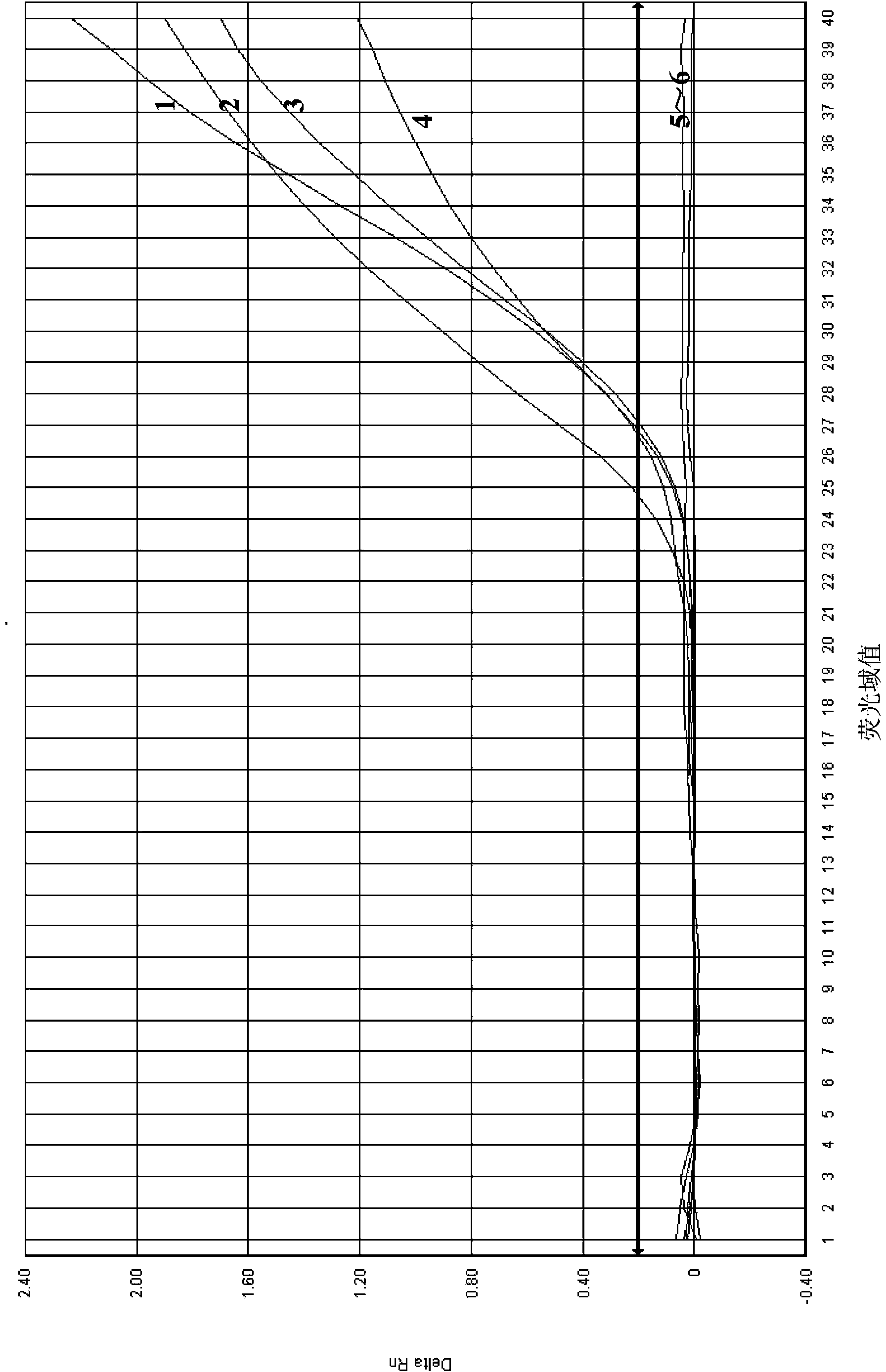Real-time fluorescence PCR (Polymerase Chain Reaction) detection method for source component of marten in food and feed
A component detection, real-time fluorescence technology, applied in biochemical equipment and methods, microbial measurement/inspection, etc., can solve the problems of ensuring the stability and specificity of the method, and achieve easy promotion, good stability and specificity, The effect of quick judgment
- Summary
- Abstract
- Description
- Claims
- Application Information
AI Technical Summary
Problems solved by technology
Method used
Image
Examples
Embodiment 1
[0053] (1) Samples to be tested: Positive control, negative control, and blank control were set up during the testing process. DNA extracted from mink component samples was used as positive control, DNA extracted from samples known not to contain mink-derived components was used as negative control, sterilized water was used as blank control, and two parallel reaction systems were set up for each group.
[0054] (2) Detection method
[0055] (1) DNA extraction
[0056] The following DNA extraction methods are all routine operations of those skilled in the art, and all reagents and solutions are prepared by conventional means or obtained from commercial means.
[0057] ①Weigh 300mg of the prepared sample into a 2mL centrifuge tube, add 1.5mL CTAB buffer (55mmol / L CTAB, 1400mmol / L NaCl, 20mmol / L EDTA, 100mmol / L Tris, adjust the pH to 8.0 with 10% hydrochloric acid , 121°C, autoclave for 20min, spare.) and 10μL proteinase K (20mg / μL), shake and mix, 65°C for 30min, shake and mi...
Embodiment 2
[0089] Embodiment 2 specificity test
[0090] Use this standard method to test samples (see Table 2~3 for sample details). The sources of samples are Dalian Forest Zoo, Dalian Mink Breeding Farm, Dalian Fur Animal Breeding Base, and major supermarkets and markets in Dalian, including: Sable hair and meat, yellow-throated mink hair and blood, Japanese mink hair and blood, mink hair and meat, fox meat, cat meat and hair, weasel hair, horse meat, donkey meat, dog meat, mutton, beef, pork, chicken, Duck, goose, quail, tiger, wolf, leopard and other inbred or non-inbred DNA samples.
[0091] Partial results of specific detection of mink-derived components are as follows: Figure 4-5 And shown in Table 2~3.
[0092] Table 2 Results of detection specificity test of mink-derived components
[0093] serial number
sample name
test results
serial number
sample name
test results
1
mink fur
+
12
horsemeat
-
2
mink m...
Embodiment 3
[0100] Embodiment 3 detection sensitivity and addition test
[0101] Addition experiment was done with mutton as the substrate. After mink meat and mutton samples were taken respectively and ground in a meat grinder, the mink minced meat was added to the mutton minced meat and mixed evenly to form a 10% added sample. Add this ratio to the new minced mutton until the formation of mink meat 200mg / kg, 100mg / kg, 50mg / kg, 20mg / kg, 10mg / kg a total of 5 gradient addition samples. Mix well during addition to ensure even distribution of the sample throughout the lamb.
[0102] According to the result judgment standard described in embodiment 1, the amplification curve is judged; Add test result: as Image 6 The sensitivity test results of mink-derived ingredients addition experiments show that mutton is used as the base of processed products, mink meat is added respectively, and the added concentrations are 200mg / kg, 100mg / kg, 50mg / kg, 20mg / kg, 10mg / kg (corresponding to Image 6 1.2...
PUM
| Property | Measurement | Unit |
|---|---|---|
| Sensitivity | aaaaa | aaaaa |
Abstract
Description
Claims
Application Information
 Login to View More
Login to View More - R&D
- Intellectual Property
- Life Sciences
- Materials
- Tech Scout
- Unparalleled Data Quality
- Higher Quality Content
- 60% Fewer Hallucinations
Browse by: Latest US Patents, China's latest patents, Technical Efficacy Thesaurus, Application Domain, Technology Topic, Popular Technical Reports.
© 2025 PatSnap. All rights reserved.Legal|Privacy policy|Modern Slavery Act Transparency Statement|Sitemap|About US| Contact US: help@patsnap.com



